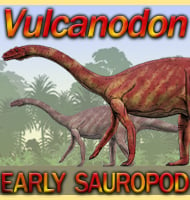Venenosaurus
In Depth Venenosaurus, meaning ‘poison lizard’ acquired its name from being discovered in the Poison Strip Member of the Cedar Mountain Formation, while the type species, V. dicrocei, is in honour of Tony DiCroce, the person who first discovered the remains. Other sauropod dinosaurs from the Cedar Mountain Formation, albeit from different Members, include Abydosaurus, … Read more
